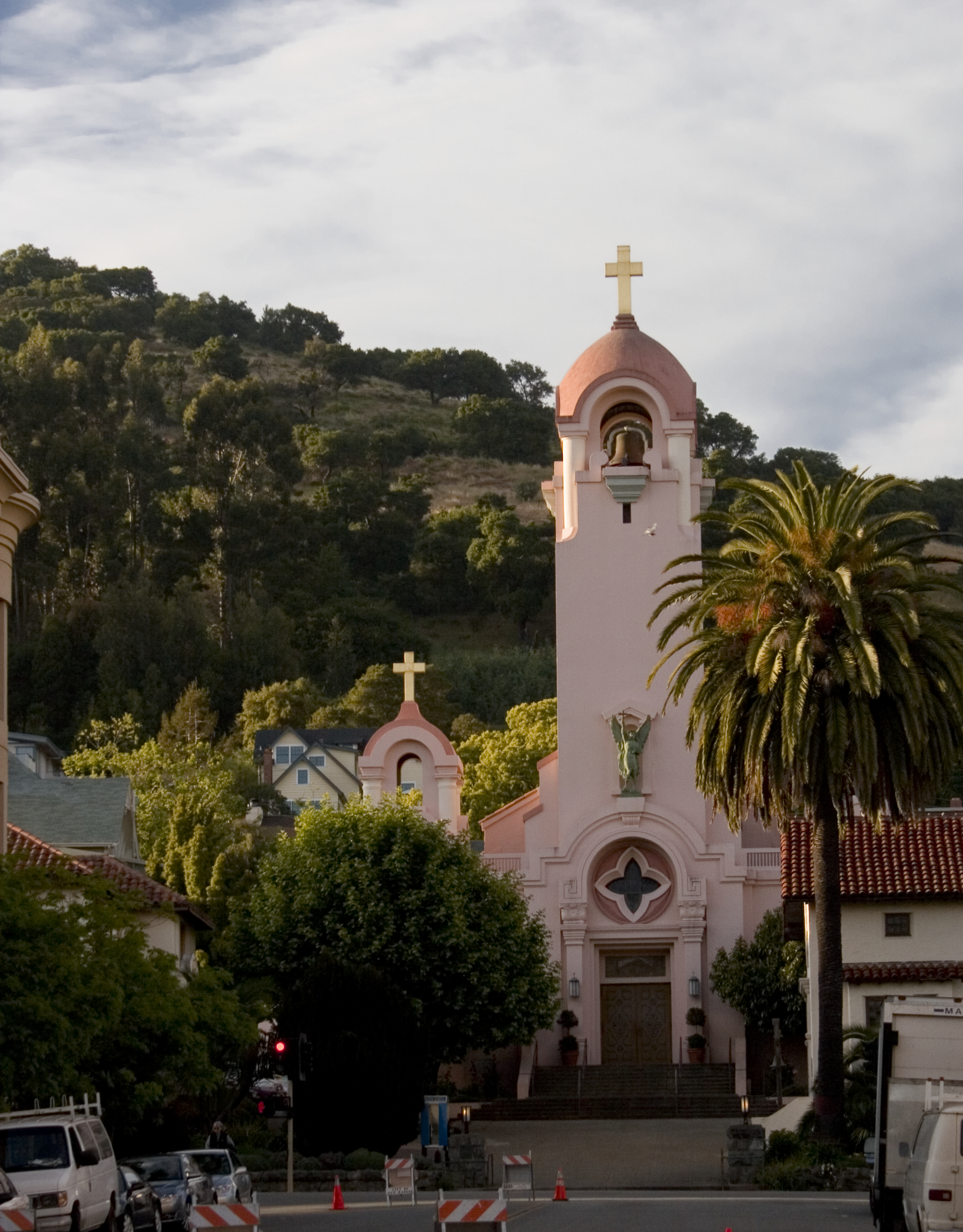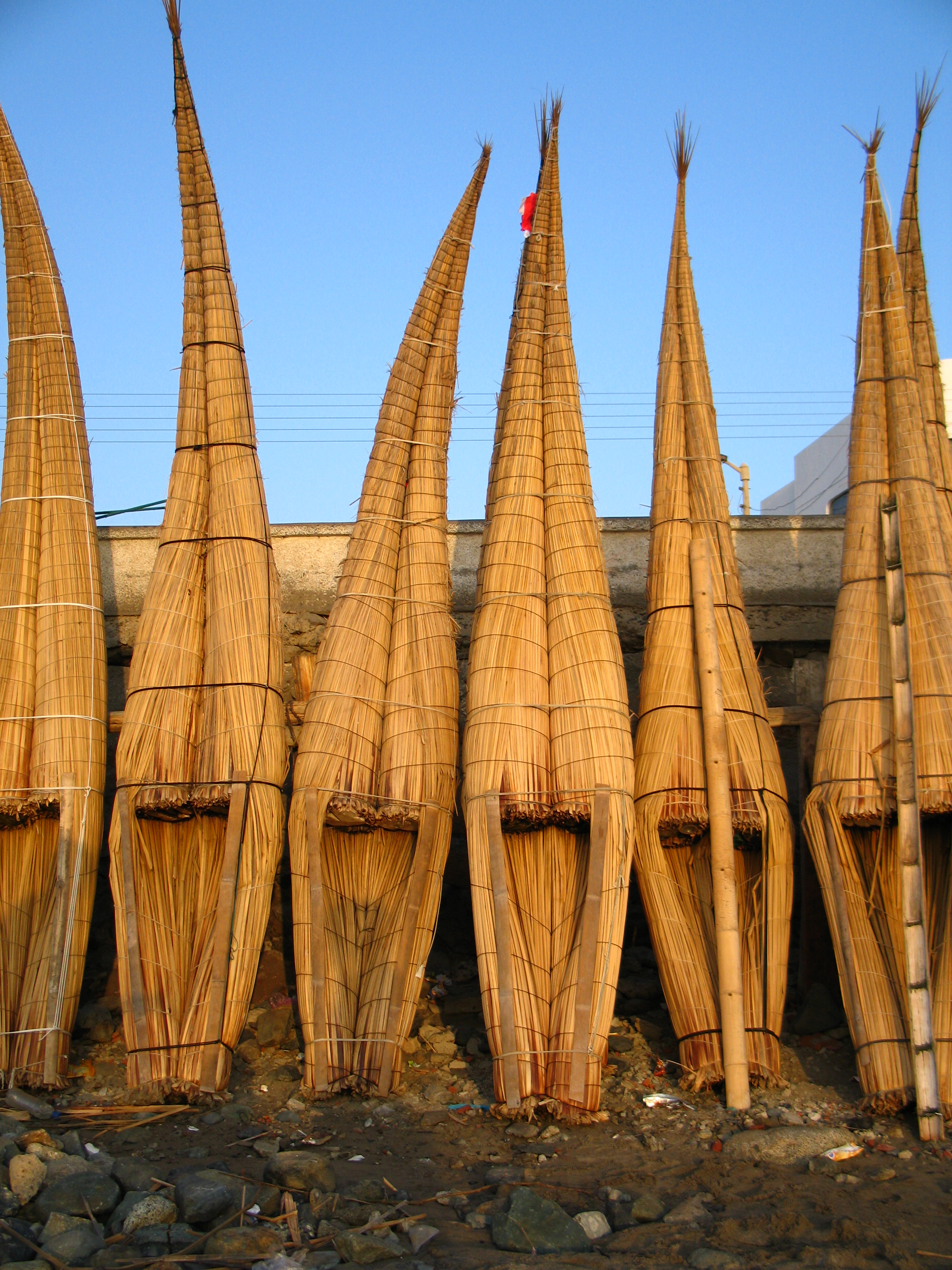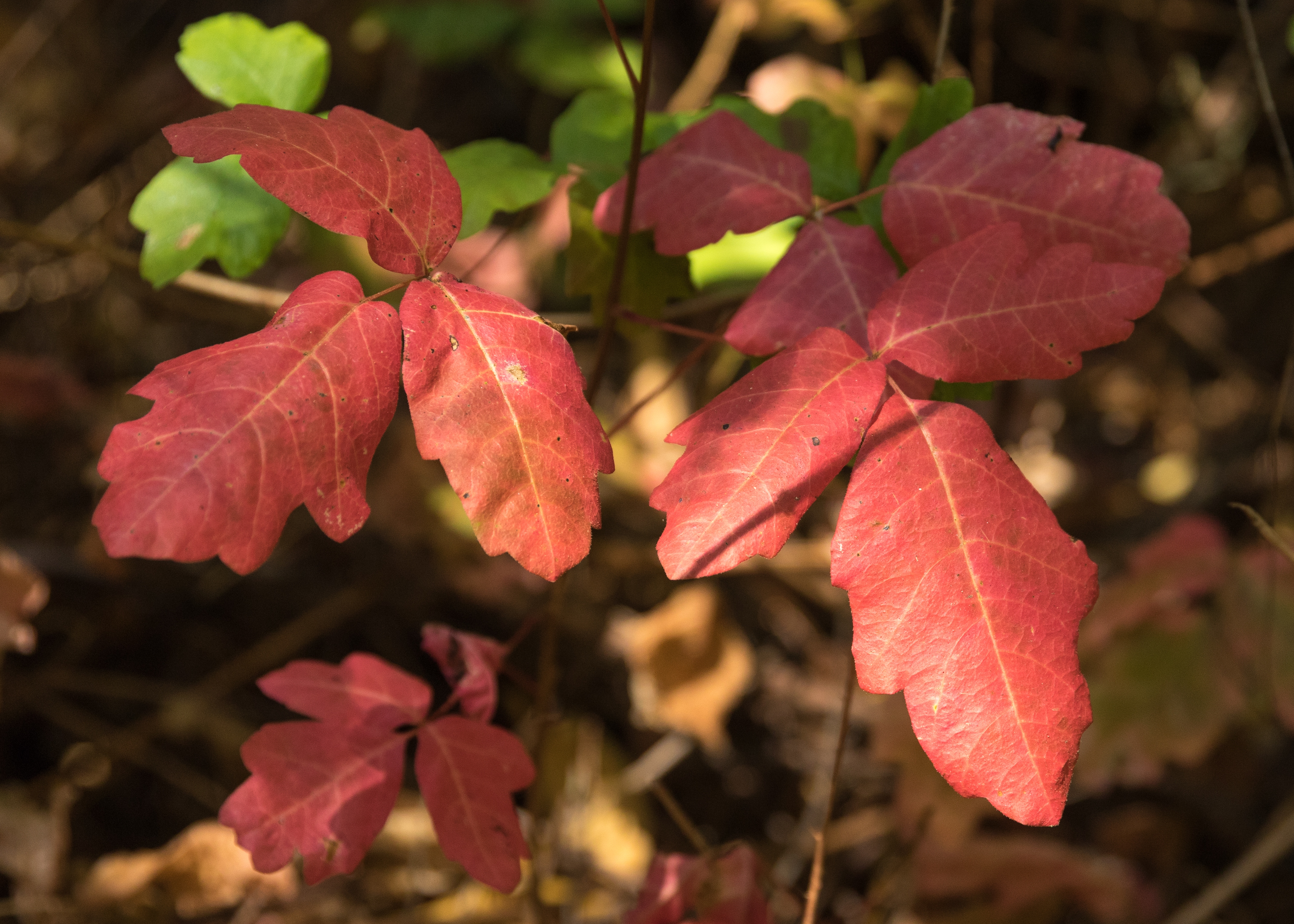|
Bass Lake (Marin County, California)
Bass Lake is a small lake in the southern portion of the Point Reyes National Seashore, northwest of Bolinas. The lake sits at an elevation of and flows out south to the ocean via a creek. Bass Lake is the largest of the five Coast Trail Lakes, which also include Pelican Lake, Crystal Lake, Ocean Lake and Wildcat Lake. Geology Much like the other nearby lakes in the southeast portion of the Point Reyes peninsula, Bass Lake occupies a natural synclinal depression formed behind blocks of rock displaced by landslides within the past 10,000 years. The depressions forming Crystal, Pelican and Bass lakes appear to have been caused by the Double Point Slide, which covers an area of about . The rocks involved in the landslide are shale, chert and sandstone, some similar to Miocene rocks of the Monterey Formation and others to Pliocene rocks from the Central Coast Ranges. The process that caused these slides is ongoing, with several nearby slides caused by the 1906 San Francisco eart ... [...More Info...] [...Related Items...] OR: [Wikipedia] [Google] [Baidu] |
Marin County, California
Marin County is a County (United States), county located in the northwestern part of the San Francisco Bay Area of the U.S. state of California. As of the 2020 United States Census, 2020 census, the population was 262,231. Its county seat and largest city is San Rafael, California, San Rafael. Marin County is across the Golden Gate Bridge from San Francisco, and is included in the San Francisco–Oakland–Berkeley, CA Metropolitan Statistical Area. Marin County's natural sites include the Muir Woods Sequoia sempervirens, redwood forest, the Marin Headlands, Stinson Beach, CA, Stinson Beach, the Point Reyes National Seashore, and Mount Tamalpais. As of 2019, Marin County had the sixth highest income per capita of all U.S. counties, at $141,735. The county is governed by the Marin County Board of Supervisors. The Marin County Civic Center was designed by Frank Lloyd Wright and draws thousands of visitors a year to guided tours of its arch and Atrium (architecture), atrium desig ... [...More Info...] [...Related Items...] OR: [Wikipedia] [Google] [Baidu] |
California Coast Ranges
The Coast Ranges of California span from Del Norte or Humboldt County, California, south to Santa Barbara County. The other three coastal California mountain ranges are the Transverse Ranges, Peninsular Ranges and the Klamath Mountains. Physiographically, they are a section of the larger Pacific Border province, which in turn is part of the larger Pacific Mountain System physiographic division. UNESCO has included the "California Coast Ranges Biosphere Reserve" in its Man and the Biosphere Programme of World Network of Biosphere Reserves since 1983. * Physiography The northern end of the California Coast Ranges overlap the southern end of the Klamath Mountains for approximately 80 miles on the west. They extend southward for more than 600 miles to where the coastline turns eastward along the Santa Barbara Channel, around the area of Point Conception. Here the southern end meets the Los Angeles Transverse Ranges, or ''Sierras de los Angeles''. The rocks themselves that com ... [...More Info...] [...Related Items...] OR: [Wikipedia] [Google] [Baidu] |
Schoenoplectus Californicus
''Schoeneoplectus californicus'' is a species of sedge known by the common names California bulrush, southern bulrush and giant bulrush. It is also sometimes called "tule", but the closely related '' Schoenoplectus acutus'' is the species most often referred to by that name. Description ''Schoenoplectus californicus'' is a rhizomed water plant found in marshy areas. It is native to the southern and western United States as well as Mexico, Central America, South America, Easter Island, and the Falkland Islands. It is naturalized on some Pacific islands including New Zealand, Hawaii and the Cook Islands. It has tall, thin, dark green stems which are usually triangular in cross-section and woolly, bristly tan or brown flowers in panicle inflorescences. Uses A notable subspecies In biological classification, subspecies is a rank below species, used for populations that live in different areas and vary in size, shape, or other physical characteristics (morphology) ... [...More Info...] [...Related Items...] OR: [Wikipedia] [Google] [Baidu] |
Schoenoplectus Acutus
''Schoenoplectus acutus'' ( syn. ''Scirpus acutus, Schoenoplectus lacustris, Scirpus lacustris'' subsp. ''acutus''), called tule , common tule, hardstem tule, tule rush, hardstem bulrush, or viscid bulrush, is a giant species of sedge in the plant family Cyperaceae, native to freshwater marshes all over North America. The common name derives from the Nāhuatl word ''tōllin'' , and it was first applied by the early settlers from New Spain who recognized the marsh plants in the Central Valley of California as similar to those in the marshes around Mexico City. Tules once lined the shores of Tulare Lake in California, formerly the largest freshwater lake in the western United States. It was drained by land speculators in the 20th century. The expression "out in the tules" is still common, deriving from the dialect of old Californian families and meaning "where no one would want to live", with a touch of irony. The phrase is comparable to "out in the boondocks". ''Schoenoplectus ... [...More Info...] [...Related Items...] OR: [Wikipedia] [Google] [Baidu] |
Willow
Willows, also called sallows and osiers, from the genus ''Salix'', comprise around 400 speciesMabberley, D.J. 1997. The Plant Book, Cambridge University Press #2: Cambridge. of typically deciduous trees and shrubs, found primarily on moist soils in cold and temperate regions. Most species are known as willow, but some narrow-leaved shrub species are called osier, and some broader-leaved species are referred to as sallow (from Old English ''sealh'', related to the Latin word ''salix'', willow). Some willows (particularly arctic and alpine species) are low-growing or creeping shrubs; for example, the dwarf willow (''Salix herbacea'') rarely exceeds in height, though it spreads widely across the ground. Description Willows all have abundant watery bark sap, which is heavily charged with salicylic acid, soft, usually pliant, tough wood, slender branches, and large, fibrous, often stoloniferous roots. The roots are remarkable for their toughness, size, and tenacity to live ... [...More Info...] [...Related Items...] OR: [Wikipedia] [Google] [Baidu] |
Lupinus Arboreus
''Lupinus arboreus'', the yellow bush lupine (US) or tree lupin (UK), is a species of flowering plant in the legume family Fabaceae. Description ''Lupinus arboreus'' is an evergreen shrub growing to tall (hence the alternative common name, tree lupine) in sheltered situations, but more typically tall. It is capable of tolerating temperatures down to −12 °C and living for up to seven years. It has green to gray-green palmate leaves, with 5–12 leaflets per leaf. The leaflets are long, often sparsely covered with fine silky hairs. In spring it bears many racemes, long, of fragrant, soft yellow, pea-like flowers. Both yellow and lilac to purple flowering forms are known. However, the yellow form is more common, except in the north of the species' range. Distribution The shrub is indigenous to California, US, where it is widely distributed among coastal sage scrub and sand dunes. Because it has been widely introduced in the state, there is some uncertainty about its ... [...More Info...] [...Related Items...] OR: [Wikipedia] [Google] [Baidu] |
Frangula Californica
''Frangula californica'' (previously classified as ''Rhamnus californica'') is a species of flowering plant in the buckthorn family native to western North America. It produces edible fruits and seeds.http://honest-food.net/2014/08/13/california-coffeeberry-edible/. Accessed 15.6.2015. It is commonly known as California coffeeberry and California buckthorn. Distribution It is native to California, the Southwestern United States, and Baja California state in Mexico. It is an introduced species in Hawaii.''Frangula californica''. NatureServe. 2012. The plant occurs in and |
Toxicodendron Diversilobum
''Toxicodendron diversilobum'' (syn. ''Rhus diversiloba''), commonly named Pacific poison oak or western poison oak, is a woody vine or shrub in the sumac family, Anacardiaceae. It is widely distributed in western North America, inhabiting conifer and mixed broadleaf forests, woodlands, grasslands, and chaparral biomes.C. Michael Hogan (2008)"Western poison-oak: ''Toxicodendron diversilobum''", GlobalTwitcher, ed. Nicklas Strömberg Peak flowering occurs in May. Like other members of the genus ''Toxicodendron'', ''T. diversilobum'' causes itching and allergic rashes in most people after contact by touch or smoke inhalation. Despite its name, it is not closely related to oaks. Description ''Toxicodendron diversilobum'' is extremely variable in growth habit and leaf appearance. It grows as a dense tall shrub in open sunlight, a treelike vine and may be more than long with an trunk, as dense thickets in shaded areas, or any form in between. It reproduces by spreading rhiz ... [...More Info...] [...Related Items...] OR: [Wikipedia] [Google] [Baidu] |
Mimulus Guttatus
''Erythranthe guttata'', with the common names seep monkeyflower and common yellow monkeyflower, is a yellow bee-pollinated annual or perennial plant. It was formerly known as ''Mimulus guttatus''. ''Erythranthe guttata'' is a model organism for biological studies, and in that context is still referred to as ''Mimulus guttatus''. There may be as many as 1000 scientific papers focused on this species. The genome is (as of 2012) being studied in depth. Description A highly variable plant, taking many forms, ''E. guttata'' is a species complex in that there is room to treat some of its forms as different species by some definitions. The plant ranges from tall with disproportionately large, 2 to 4 cm long, tubular flowers. The perennial form spreads with stolons or rhizomes. The stem may be erect or recumbent. In the latter form, roots may develop at leaf nodes. Sometimes dwarfed, it may be hairless or have some hairs. Leaves are opposite, round to oval, usually coarsely a ... [...More Info...] [...Related Items...] OR: [Wikipedia] [Google] [Baidu] |
Salvia Mellifera
''Salvia mellifera'' (black sage, also known as seel by the Mahuna) is a small, highly aromatic, evergreen shrub of the genus ''Salvia'' (the sages) native to California, and Baja California, Mexico. It is common in the coastal sage scrub of Southern California and northern Baja California. Black sage has a dark appearance, especially during drought. Description Black sage is a perennial shrub that grows approximately tall. It is covered with simple hairs with some glandular hairs, which makes it highly aromatic. The leaves are oblong-elliptic to obovate in shape and are about long. The upper surface of the leaf is somewhat glabrous, while the lower surface of the leaf is hairy. The inflorescence occurs in wide clusters. The flowers are usually a pale blue or lavender color, and rarely a pale rose color. The upper lip of the flower is 2-lobed. The style and stamens are slightly exserted. The fruit produced by the black sage is a schizocarp composed of four brown nutlets. ... [...More Info...] [...Related Items...] OR: [Wikipedia] [Google] [Baidu] |
Artemisia Californica
''Artemisia californica'', also known as California sagebrush, is a species of western North American shrub in the sunflower family. Description ''Artemisia californica'' branches from the base and grows out from there, becoming rounded; it grows tall. The stems of the plant are slender, flexible, and glabrous (hairless) or canescent (fuzzy). The leaves range from long and are pinnately divided with 2–4 threadlike lobes less than 5 cm long. Their leaves are hairy and light green to gray in color; the margins of the leaves curl under. The inflorescences are leafy, narrow, and sparse. The capitula are less than in diameter. The pistillate flowers range in number from 6 to 10 and the disk flowers range from 15 to 30; they are generally yellowish, but sometimes red. The fruits produced are resinous achenes up to 1.5 mm long. There is a pappus present that forms a minute crown on the achene body. The plant contains terpenes which make it quite aromatic. Many peop ... [...More Info...] [...Related Items...] OR: [Wikipedia] [Google] [Baidu] |
Nassella Pulchra
''Nassella pulchra'', basionym ''Stipa pulchra'', is a species of grass known by the common names purple needlegrass and purple tussockgrass. It is native to the U.S. state of California, where it occurs throughout the coastal hills, valleys, and mountain ranges, as well as the Sacramento Valley and parts of the Sierra Nevada foothills, and Baja California. It grows in many types of local habitat, including grassland, chaparral, and oak woodland. It grows well on clay and serpentine soils. Description ''Nassella pulchra'' is a perennial bunch grass producing tufts of erect, unbranched stems up to tall. The extensive root system can reach deep into the soil, making the grass more tolerant of drought.California Native Perennial Grasses. Hastings Natural History Reservation. The open, nodding |







